Tests of Time 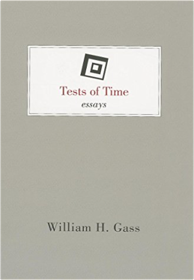 Willie Masters' Lonesome Wife 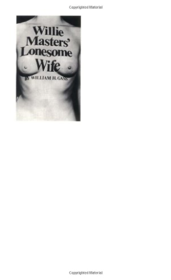 Like Laurence Sterne and Lewis Carroll before him, Gass uses a variety of visual devices: photographs, comic-strip balloons, different typefaces, parallel story lines (sometimes three or four to the page), even coffee stains. As Larry McCaffery has pointed out, "the lonesome lady of the book's title, who is gradually revealed to be lady language herself, creates an elaborate series of devices which she hopes will draw attention to her slighted charms [and] force the reader to confront what she literally is: a physically exciting literary text." Life Sentences: Literary Judgments and Accounts 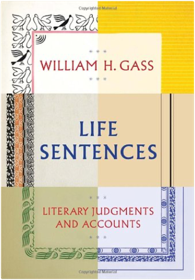 It begins with the personal, both past and present. It emphasizes Gass’s lifelong attachment to books and moves on to the more analytical, as he ponders the work of some of his favorite writers (among them Kafka, Nietzsche, Henry James, Gertrude Stein, Proust). He writes about a few topics equally burning but less loved (the Nobel Prize–winner and Nazi sympathizer Knut Hamsun; the Holocaust). Finally, Gass ponders theoretical matters connected with literature: form and metaphor, and specifically, one of its genetic parts—the sentence. Gass embraces the avant-garde but applies a classic standard of writing to all literature, which is clear in these essays, or, as he describes them, literary judgments and accounts. Life Sentences is William Gass at his Gassian best. Middle C 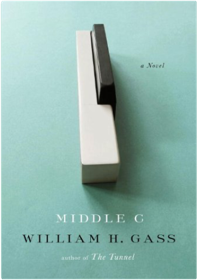 Gass’s new novel moves from World War II Europe to a small town in postwar Ohio. In a series of variations, Gass gives us a mosaic of a life—futile, comic, anarchic—arranged in an array of vocabularies, altered rhythms, forms and tones, and broken pieces with music as both theme and structure, set in the key of middle C. It begins in Graz, Austria, 1938. Joseph Skizzen's father, pretending to be Jewish, leaves his country for England with his wife and two children to avoid any connection with the Nazis, who he foresees will soon take over his homeland. In London with his family for the duration of the war, he disappears under mysterious circumstances. The family is relocated to a small town in Ohio, where Joseph Skizzen grows up, becomes a decent amateur piano player, in part to cope with the abandonment of his father, and creates as well a fantasy self—a professor with a fantasy goal: to establish the Inhumanity Museum . . . as Skizzen alternately feels wrongly accused (of what?) and is transported by his music. Skizzen is able to accept guilt for crimes against humanity and is protected by a secret self that remains sinless. Middle C tells the story of this journey, an investigation into the nature of human identity and the ways in which each of us is several selves, and whether any one self is more genuine than another. William Gass set out to write a novel that breaks traditional rules and denies itself easy solutions, cliff-edge suspense, and conventional surprises . . . Middle C is that book; a masterpiece by a beloved master. Cartesian Sonata and Other Novellas 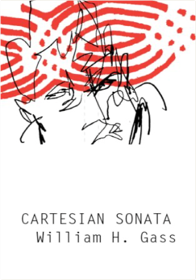 Conversations with William H. Gass 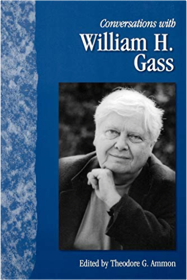 Eyes: Novellas and Stories 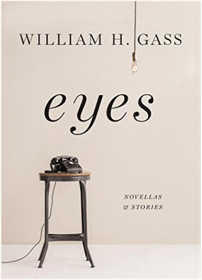 It begins with "In Camera," the first of the two novellas, and tells the story, which grows darker and dustier by the speck, of a Mr. Gab (who doesn’t have the gift) and his photography shop (in a part of town so drab even robbers wouldn’t visit), a shop stuffed with gray-white, gray-bleach photographs, each in its own cellophane sheet, loosely side-filed in cardboard boxes, tag attached . . . an inner sanctum where little happens beyond the fulsome, deep reverence for Mr. Gab’s images and vast collection, a homemade museum in the midst of the outer maelstrom . . . until a Mr. Stu (as in u-stew-pid) enters the shop, inspecting the extraordinary collection, and Mr. Gab’s treasure-filled, dust-laden, meticulously contained universe begins to implode . . . In the story “Don’t Even Try, Sam,” the upright piano from the 1942 Warner Bros. classic Casablanca is interviewed (“I know why you want to talk to me,” the piano says. “It’s because everybody else is dead. Stars go out. Directors die. Companies fold. But some of the props get preserved. I’ve seen my friend the Vichy water bottle in the storeroom as wrapped up as the Maltese Falcon. We’d fetch a price now”) . . . In another story, “Charity,” a young lawyer, whose business it is to keep hospital equipment honestly produced, offers a simple gift and is brought to the ambiguous heart of charity itself. In “Soliloquy for a Chair,” a folding chair does just that—talks in a barbershop that is ultimately bombed . . . and in “The Toy Chest,” Disneylike creatures take on human roles and concerns and live in an atmosphere of a child’s imagination. An enchanting Gassian journey; a glorious fantasia; a virtuoso delight. Fiction and the Figures of Life 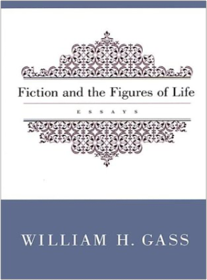 Finding a Form: Essays 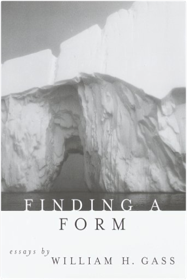 In the Heart of the Heart of the Country: And Other Stories 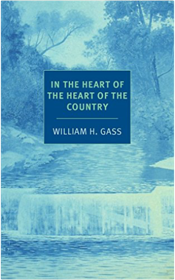 Omensetter's Luck 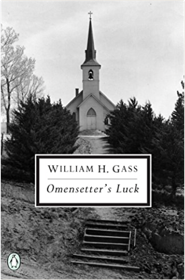 On Being Blue: A Philosophical Inquiry 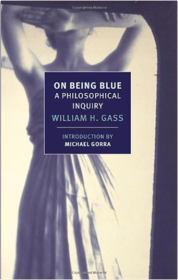 Gass writes: Of the colors, blue and green have the greatest emotional range. Sad reds and melancholy yellows are difficult to turn up. Among the ancient elements, blue occurs everywhere: in ice and water, in the flame as purely as in the flower, overhead and inside caves, covering fruit and oozing out of clay. Although green enlivens the earth and mixes in the ocean, and we find it, copperish, in fire; green air, green skies, are rare. Gray and brown are widely distributed, but there are no joyful swatches of either, or any of exuberant black, sullen pink, or acquiescent orange. Blue is therefore most suitable as the color of interior life. Whether slick light sharp high bright thin quick sour new and cool or low deep sweet dark soft slow smooth heavy old and warm: blue moves easily among them all, and all profoundly qualify our states of feeling. Reading Rilke: Reflections on the Problems of Translation 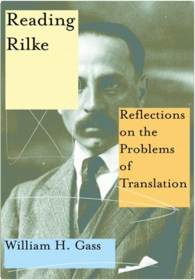 A Temple of Texts 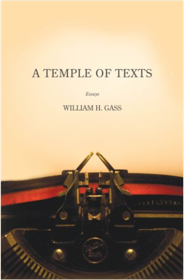 The Tunnel 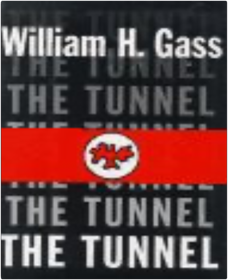 The William H. Gass Reader 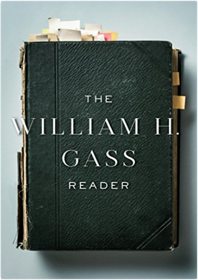 It begins with his essays, in which Gass looks back at varying points in his writing life at those writers (from Plato, Hobbes, and James, to Joyce, Beckett, Stein, and Gaddis) whose work he found inspiring . . . and at those whose work he explores and embraces (Laurence Sterne's Tristram Shandy; Ford Madox Ford's Parade's End; Thomas Mann's The Magic Mountain; Stendhal's The Red and the Black). He writes (from A Temple of Texts) on the nature and value of writing ("The true alchemists do not change lead into gold; they change the world into words"). Here is a rich experience of Gass's short fiction: from Eyes, his masterfully crafted novella, "In Camera," about collecting, hording; about suspicions run amok . . . from Cartesian Sonata . . . and In the Heart of the Heart of the Country (1968), a mythical reimagining of America's heartland. And from his nimble, daredevil novels: Middle C (2013), the chronicle of an Austrian-born man who, as a child with his mother, relocates to America's Midwest (Woodbine, Ohio), grows up a low-skilled amateur piano player to become a music professor at a small Bible college; his only hobby a fantasy life as the curator of his Inhumanity Museum . . . and from The Tunnel ("The most beautiful, most complex, most disturbing novel to be published in my lifetime" —Michael Silverblatt, Los Angeles Times). World Within the Word (American Literature (Dalkey Archive)) 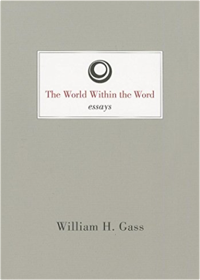 |


Delicious Library
Collection Total:
3,640 Items
3,640 Items
Last Updated:
Nov 2, 2025
Nov 2, 2025
 Made with Delicious Library
Made with Delicious Library